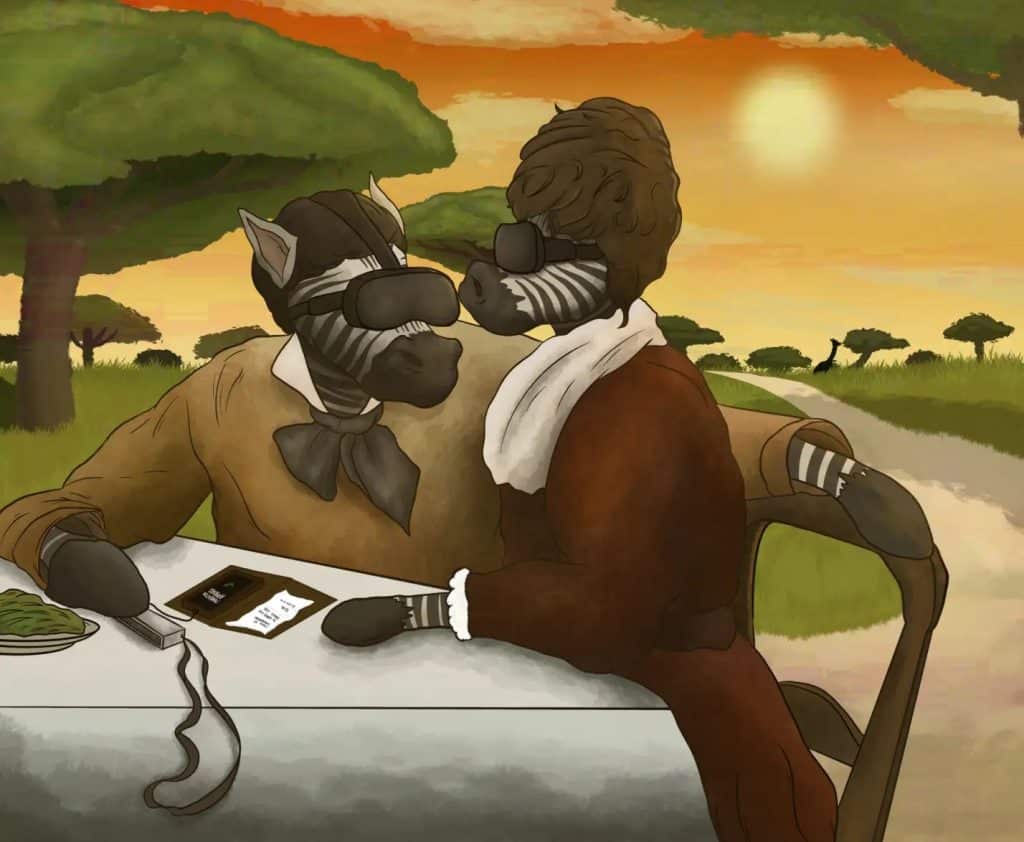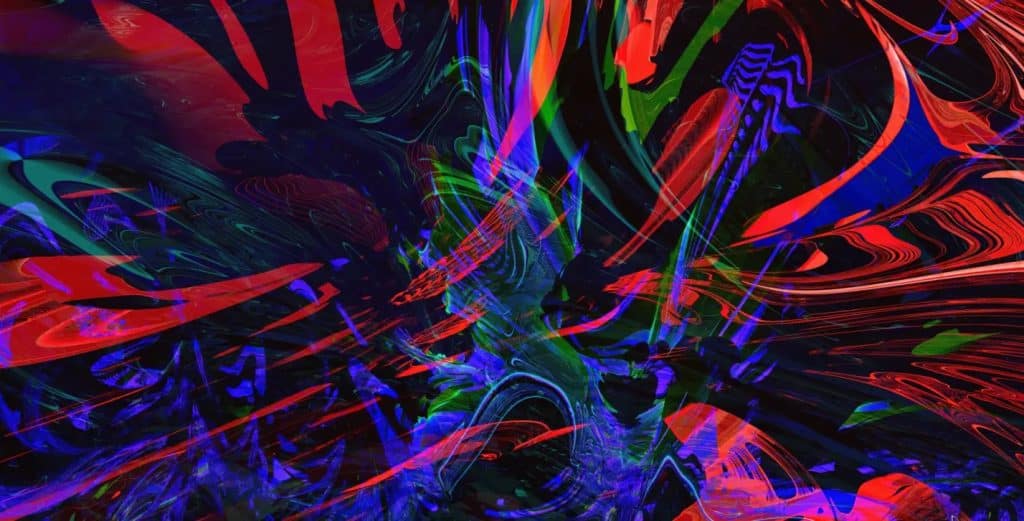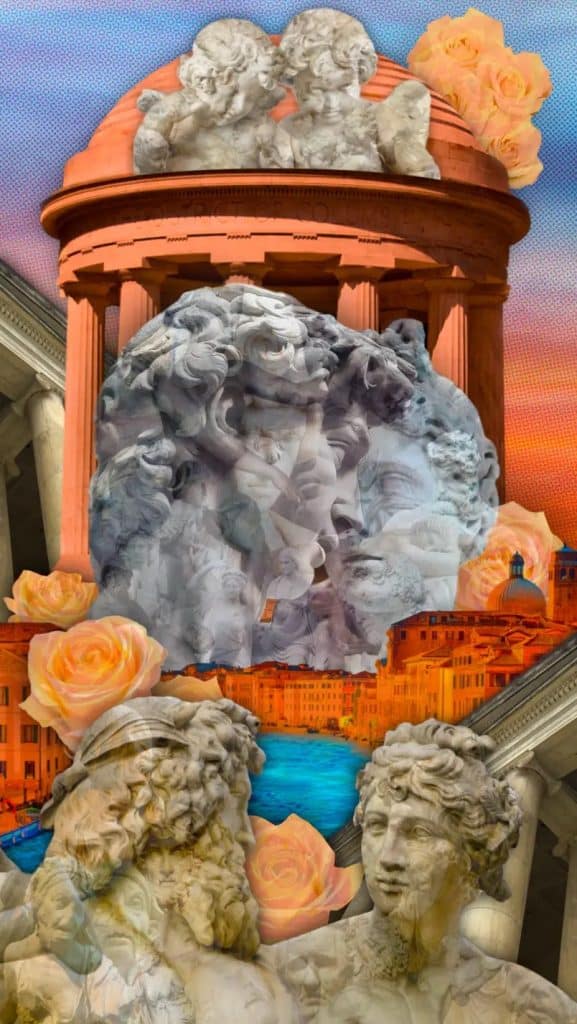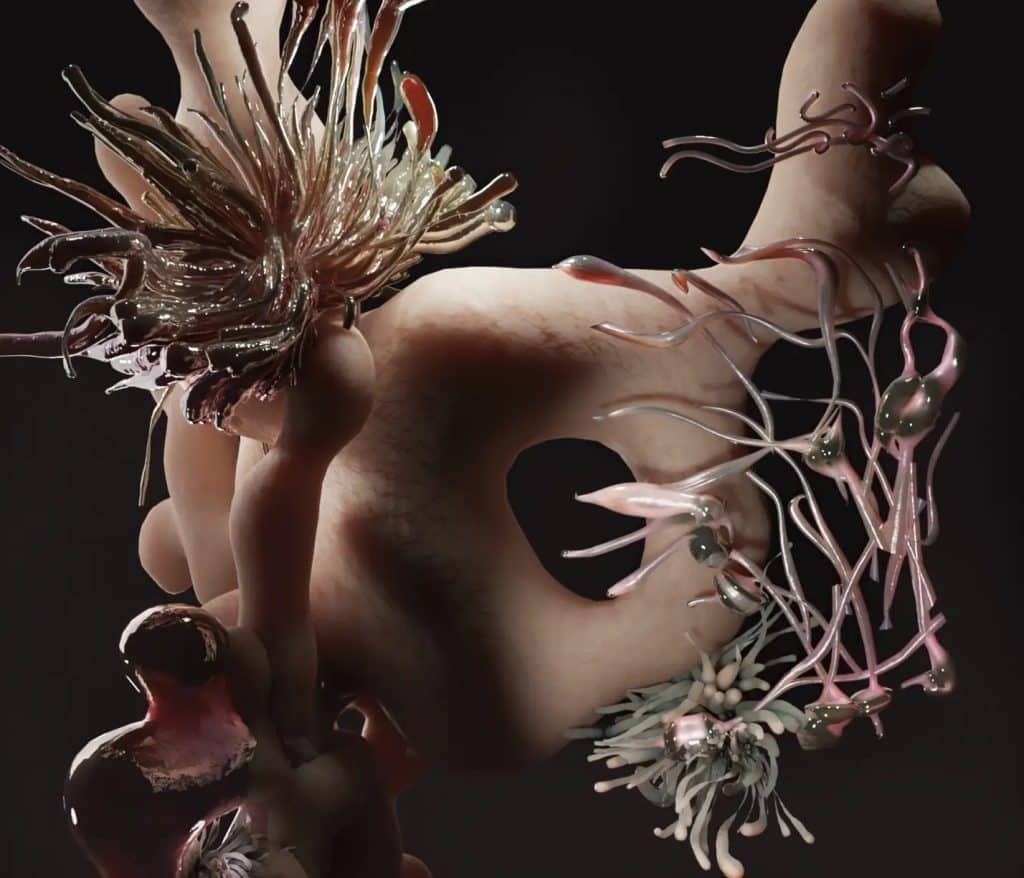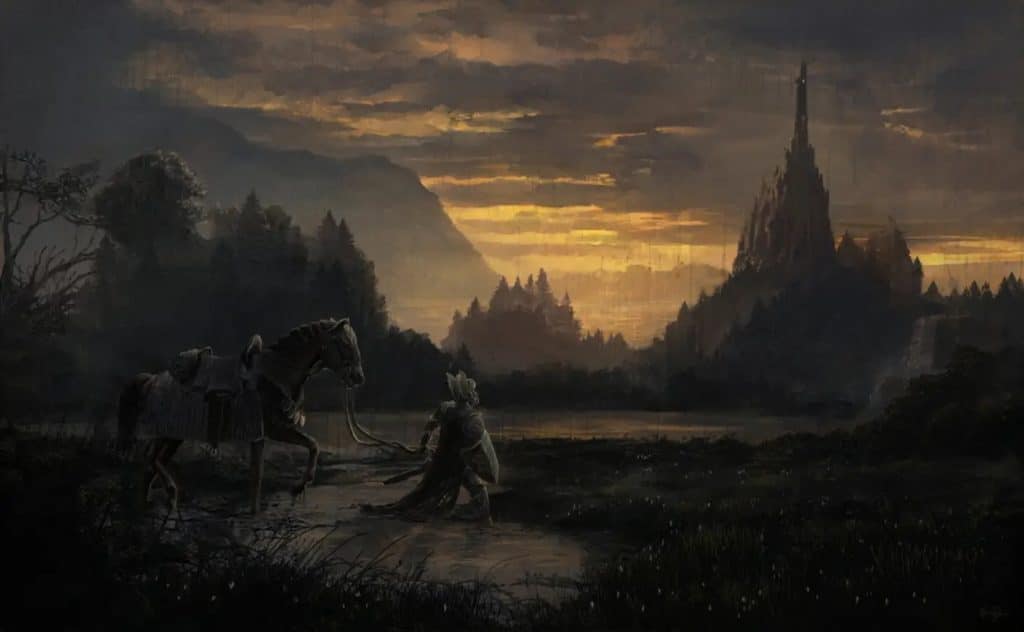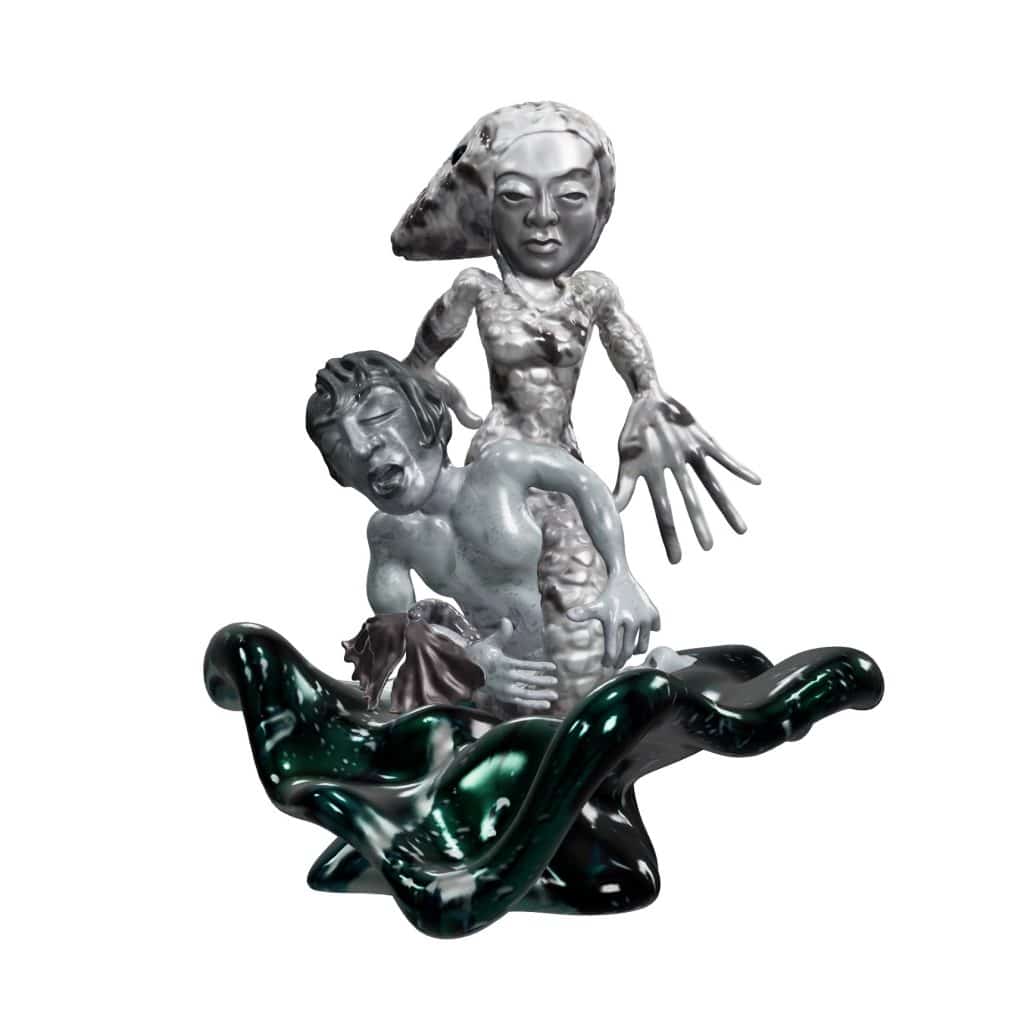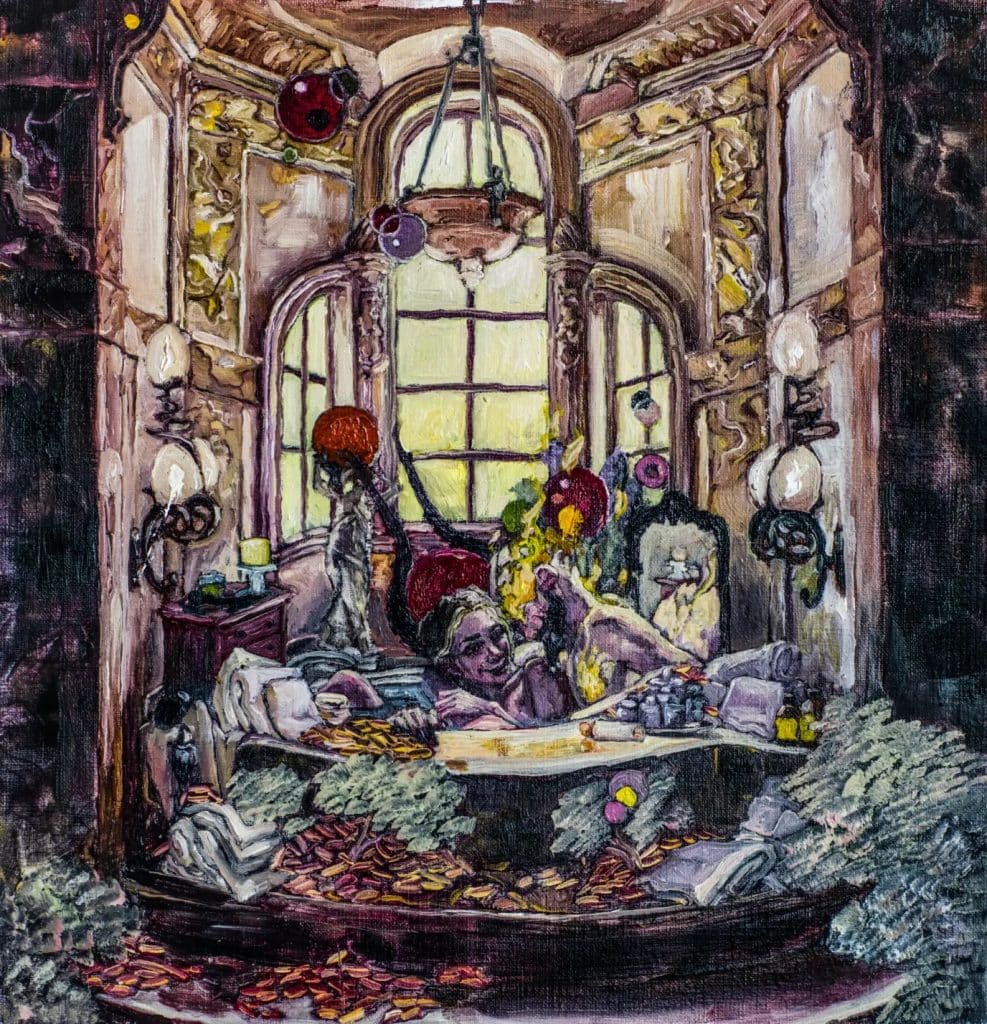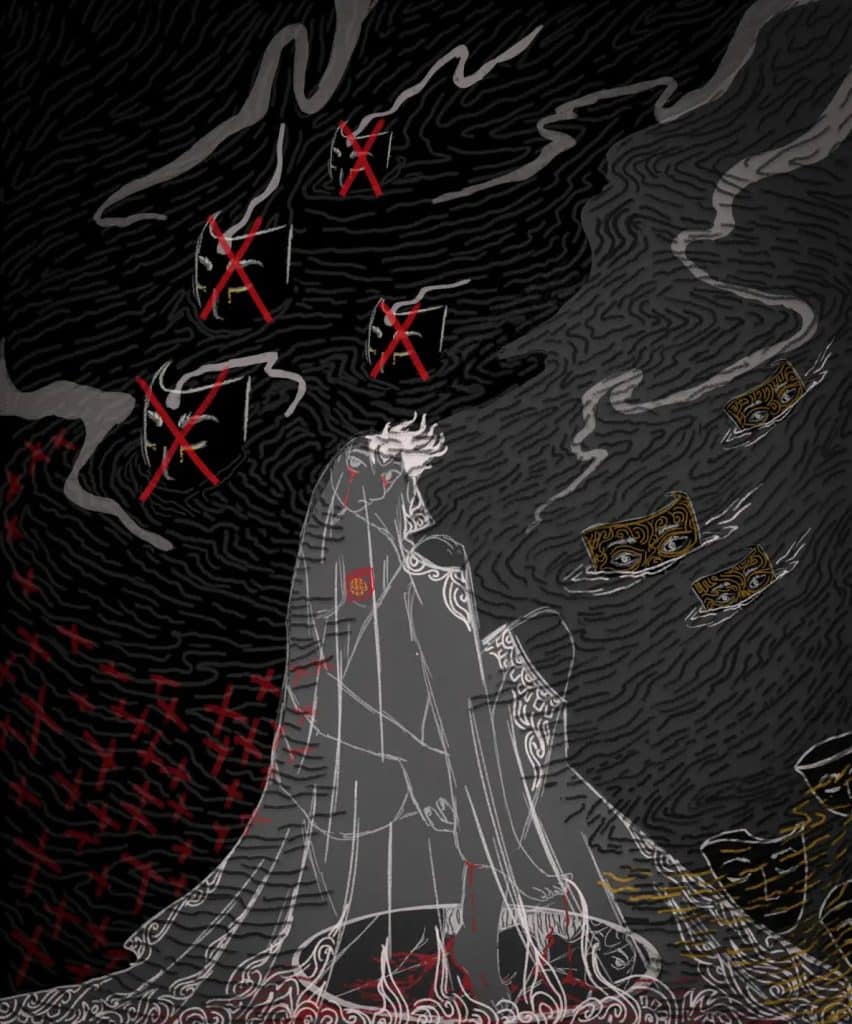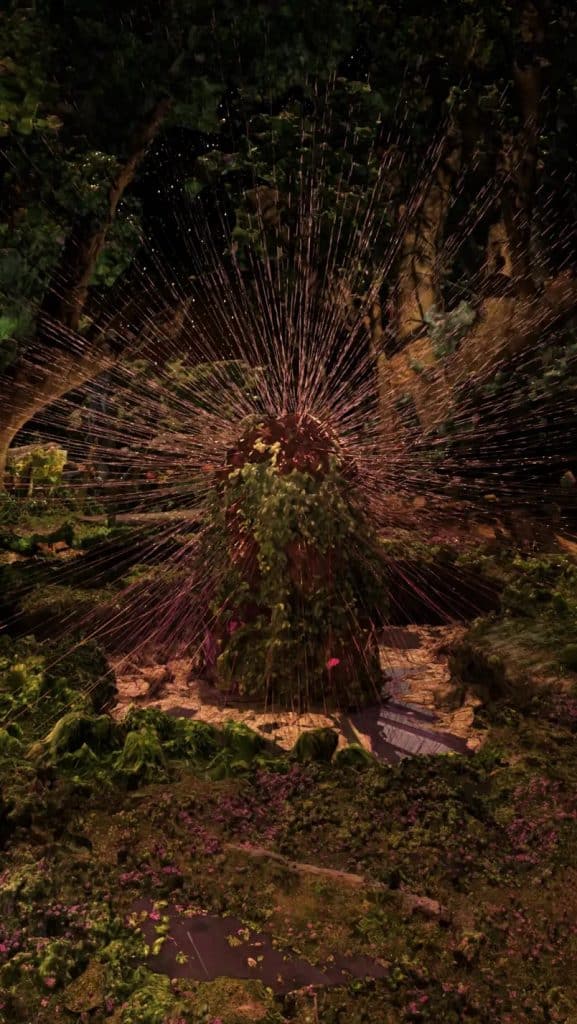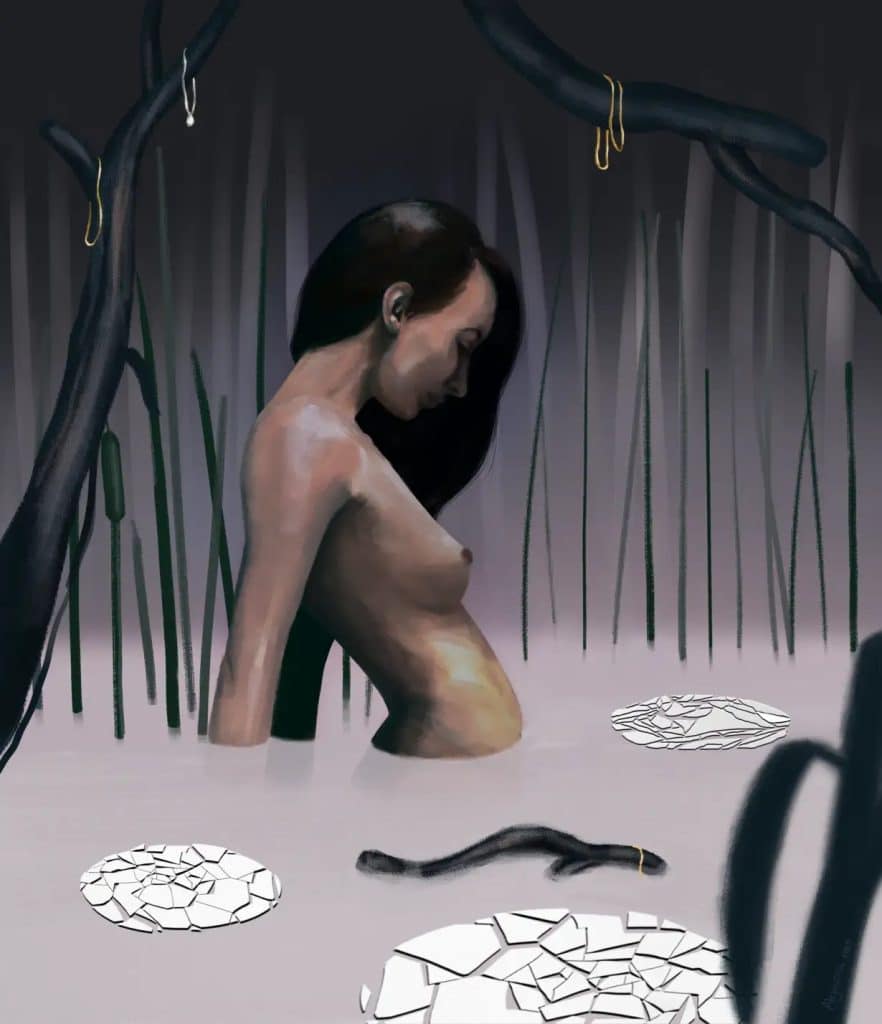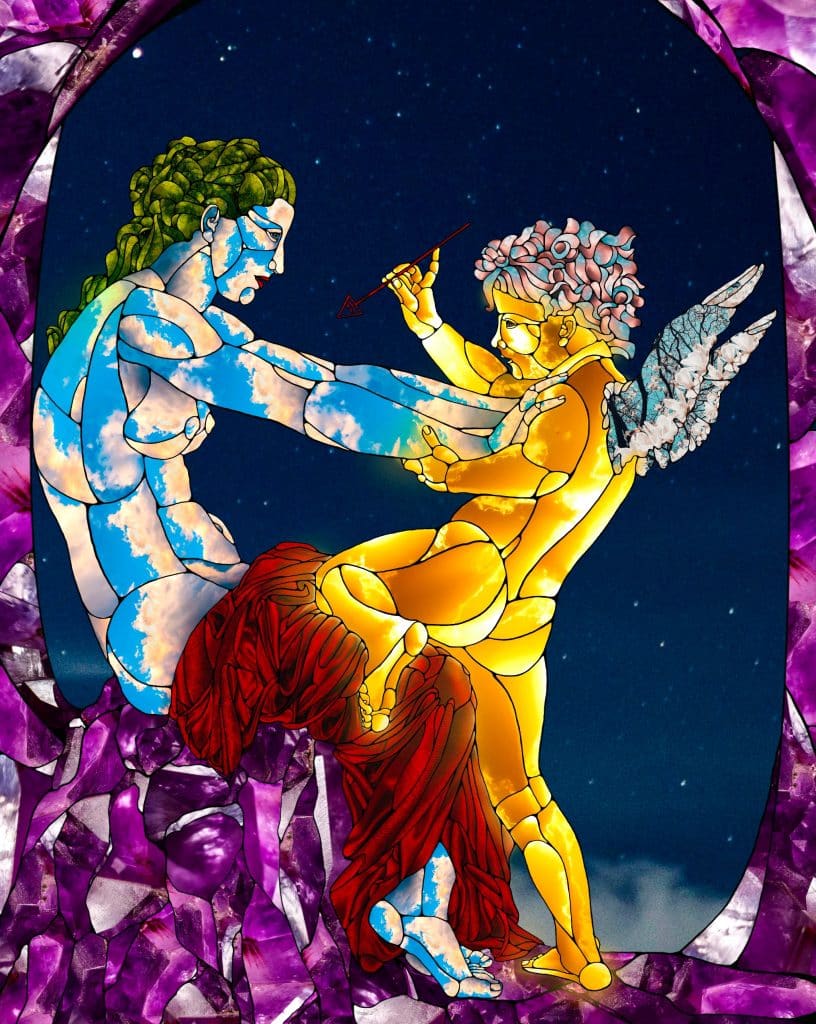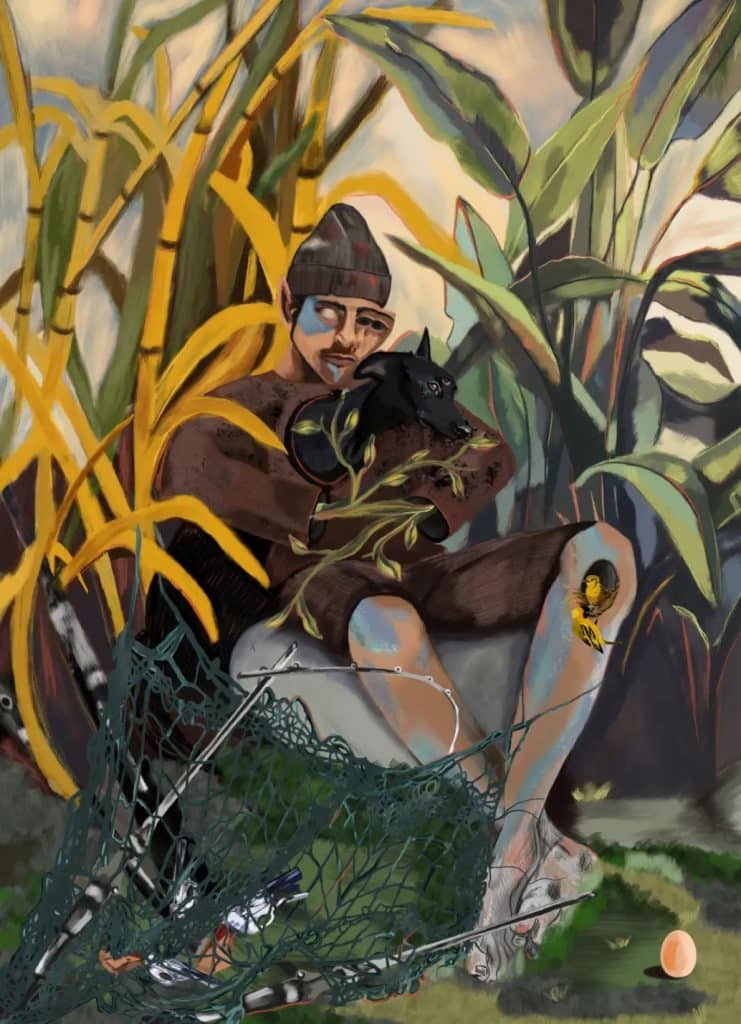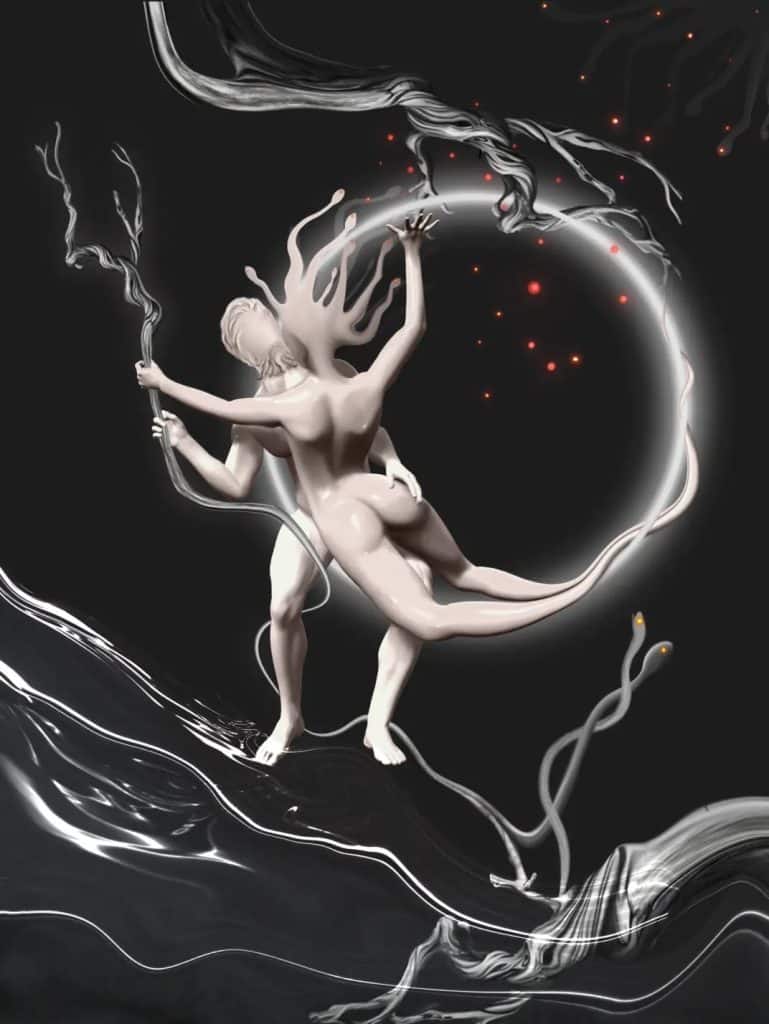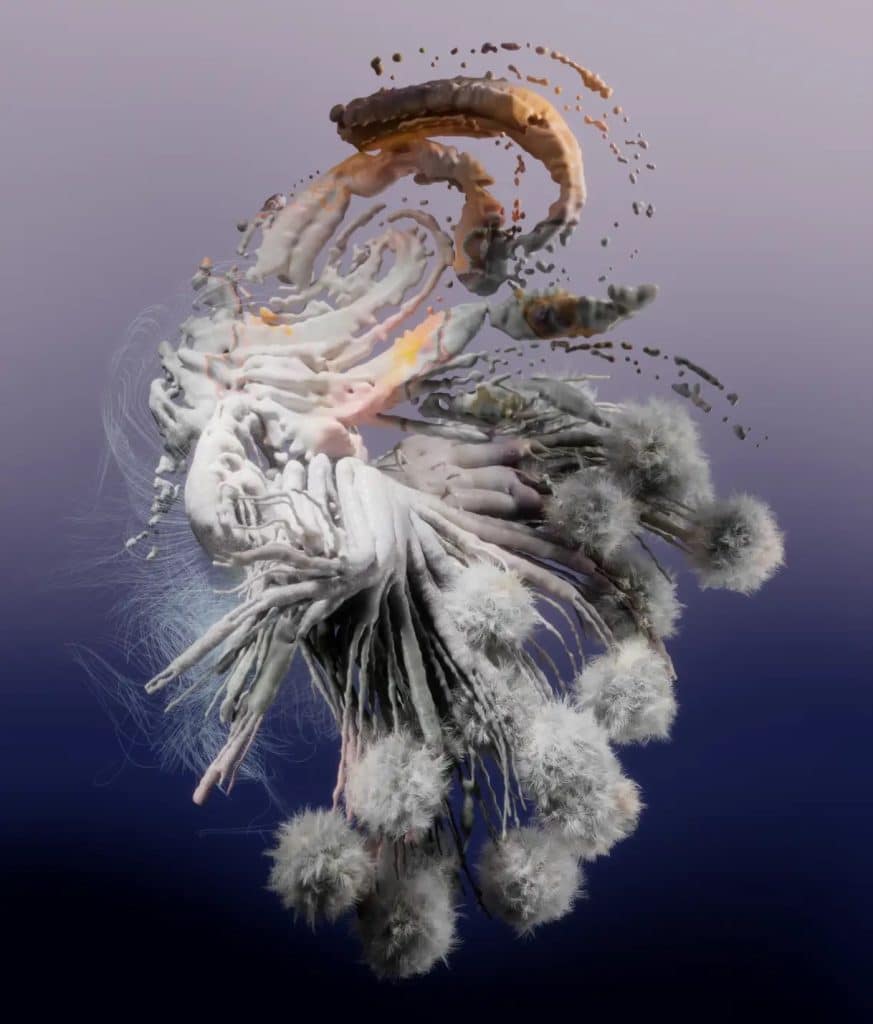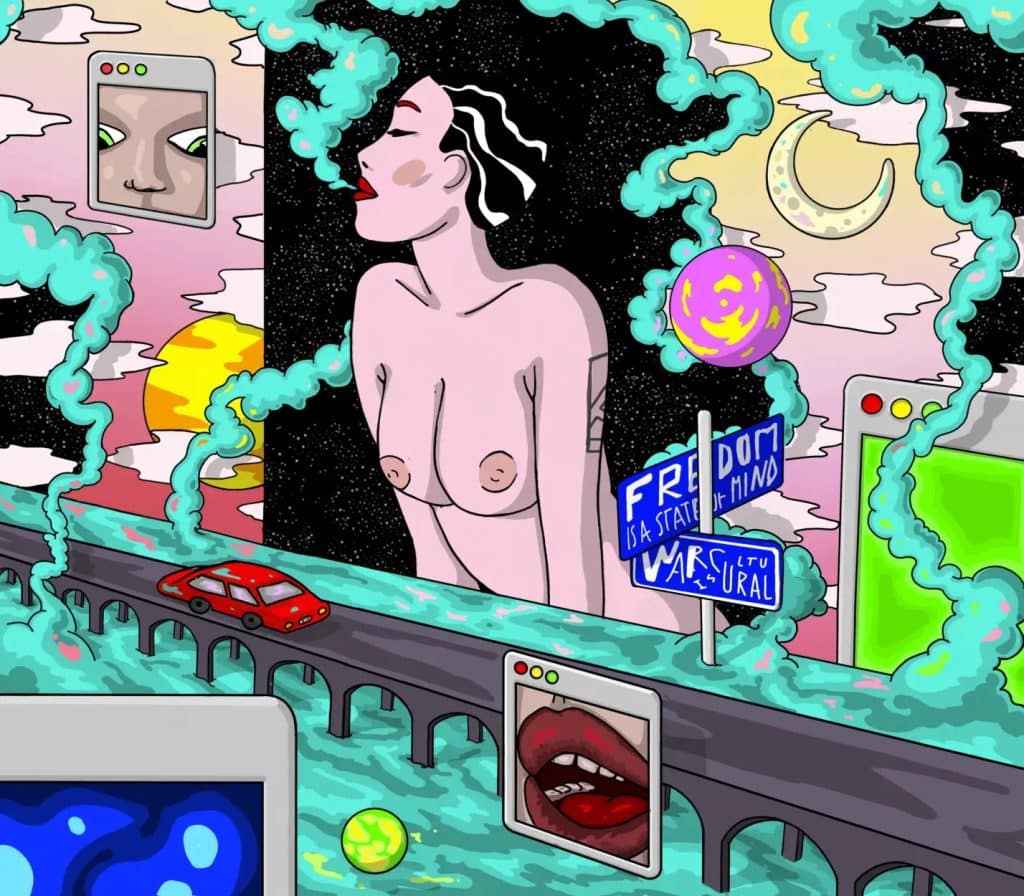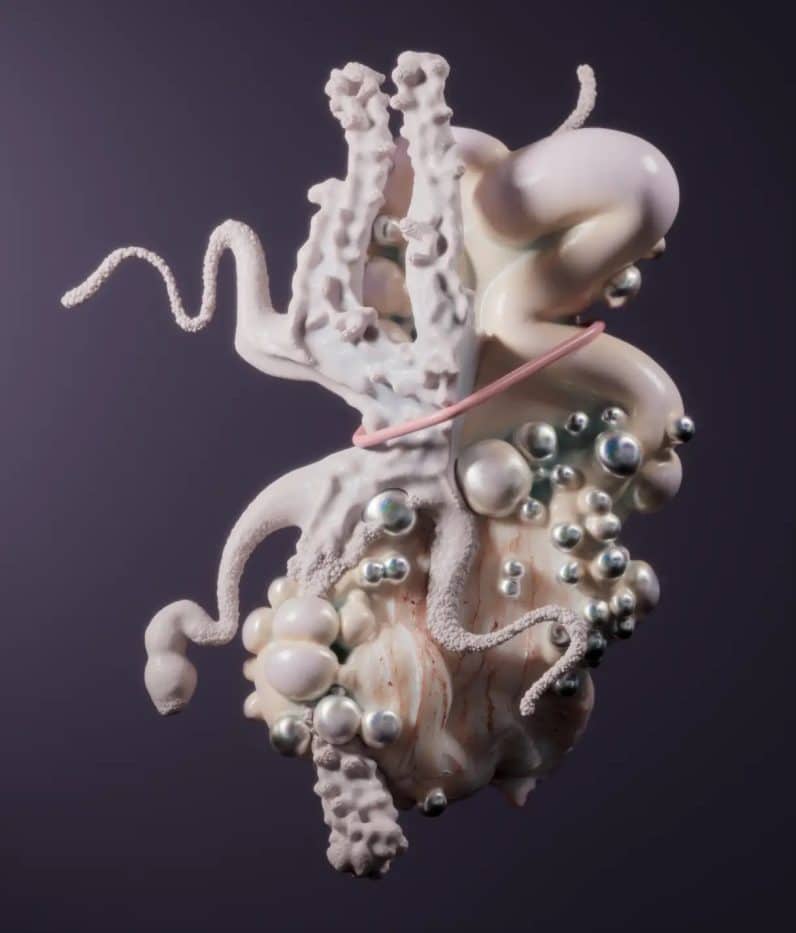In the 1983 short story “Basileus,” by sci-fi author Robert Silverberg, a Bay Area computer programmer named Dan Cunningham learns how to download angels. Eventually, he spends so much time chatting with his cohort of more than 1,100 celestial beings (and inventing new ones) that he’s too tired to focus on his Defense Department job and loses all interest in socializing and romancing in real life. The story culminates in Cunningham’s starting a nuclear war by way of computer code and transforming himself into Basileus, Emperor of the Angels.
Four decades later, the Internet has a new Bay Area computer maestro named Basileus. This one is much less scary. Rather than downloading angels, our 21st-century Basileus (who borrowed his pseudonym from Silverberg’s story) roams web3 marketplaces scooping up NFTs. So far, he has amassed more than 1,500 works of cryptoart and cryptomusic.
Basileus was one of those smart and fortunate techies who invested in crypto well before the big boom and subsequent fizzle of the early 2020s. “I got into cryptocurrency pretty early because, as a computer scientist with a background in finance, I found the basic concepts straightforward,” he says. “And since I’ve always been fascinated with art but found collecting to be too difficult, I was an easy convert to cryptoart.”
Through his collecting, Basileus has forged deep connections with artists and become a collector to watch in the NFT realm, where major players are often followed by those hoping to get in on the next überprofitable crypto discovery.
In his communications, Basi, as he’s affectionately called by some artists, reveals a tenderness and generosity that shines forth in the theme he’s chosen for the new NFT exhibition he’s curated, “Mythic Love.” He selected two dozen creators for the show, including some, like WGMeets, Angie Taylor and Stina Jones, whose NFTs he collects.
“I wanted to give them free rein to work in the theme of the queen of emotions,” the Berkeley-based curator says. “By qualifying the theme as ‘mythic,’ I wanted to give them an extra degree of freedom to choose something classic — some of the artists have done thrilling work on mythological themes — or to treat the existence of love itself as a myth.”
The artists ran with it, finding inspiration in everything from Pre-Raphaelite paintings and regional folklore to dating apps and their personal histories. “Absolutely one of the most interesting ideas within the theme of love is the different types of it,” Basileus says. There’s familial love, universal love, divine love, platonic love, love of nature, love for pets and so on. “At the same time,” he notes, “I think we are all fascinated by the mythology around true love in a romantic sense.”
Here, all 24 artists tell us about their “Mythic Love” works and how they address the topic at hand.
“When Basileus invited me to participate in this show, I knew I wanted to submit a love poem written by Technelegy, my AI alter ego, a cybernetic embodiment of my passion for poetry and the love child of an intimate collaboration between human and machine. This 1/1 media-rich poem, B1NARY 0DE, created together with my musical partner, Kris Bones, and the artist Nathaniel Stern, is rooted in a text I coauthored with Technelegy musing on the pairing off of zeroes and ones in our transcendent universal language.
“It is at the heart of 0RAL B1NARY, Nathaniel’s and my new generative ‘token word’ project on fxhash — an evolution of my ongoing obsession with the poetics of binary code coupled with Nathaniel’s performative, experimental take on spoken word.” — Sasha Stiles
“I created Kiss me thru the Headset for ‘Mythic Love’ as a modern take on online dating and dating apps, putting the two zebras into a date in the metaverse sharing a nice plate of grass together. My work has comprised only zebras since I started creating NFTs.
“The original painting that this piece references is At the Père Lathuille Restaurant by Édouard Manet. This was the first painting that came into my head when I heard the word love, and as a student of art teaching, I am very familiar with Manet’s work.”
“As for the ‘mythic’ part, instead of the usual images that arise in your head when you hear the word myth or mythical, I envisioned love over the web, in a modern-day scenario merging with the whole fascination with the metaverse that all of us web3 people seem to have. Sure, you can have love face-to-face, but I’ve yet to hear of someone going on a date through the metaverse. I thought it was funny and went with it.” — Zuphioh
“‘Mythic love’ to me means the larger-than-life feeling of what love is, something that is magical and surreal but grounded at the same time.
“The essence of love is a powerful, life-altering feeling — it’s hard to describe but easy to feel.
“This is my way of visually portraying what I and others feel when in love. Knowing that I’ve been in that exact moment when the world stops as soon as you smell your loved one’s perfume, I wanted my piece for ‘Mythic Love’ to symbolize that powerful emotion.” — WGMeets
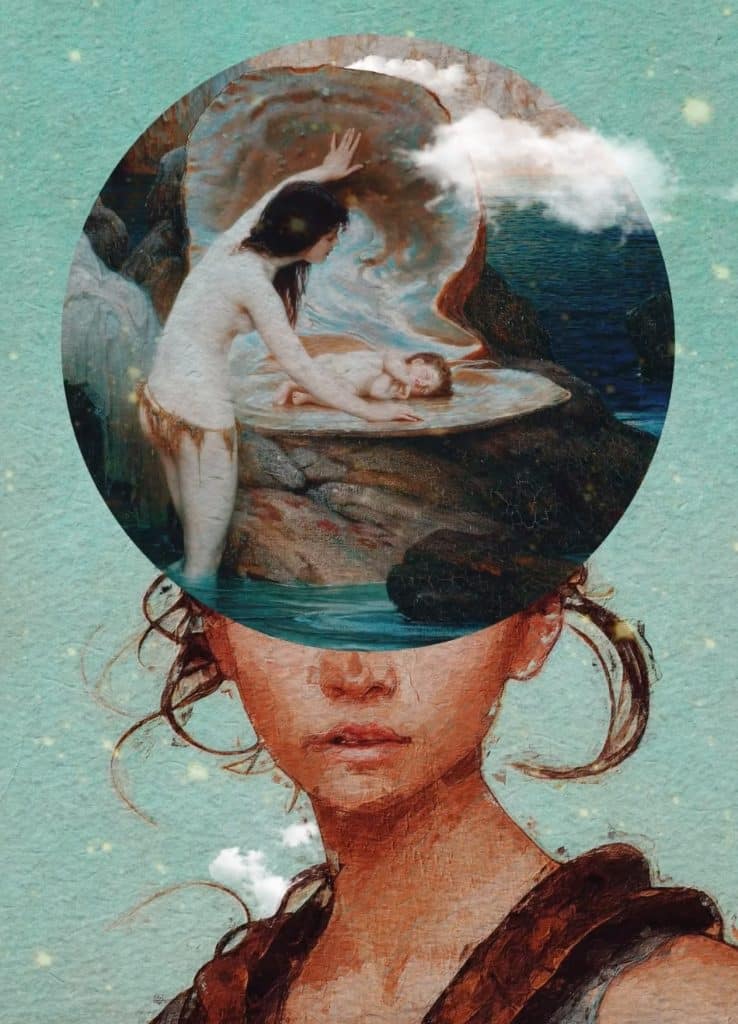
“The three works are characteristic of my combination of classical paintings, Greek mythology and modern portraits. In LOVE ON MY MIND (Modern Poseidon) and MATERNAL LOVE, I was inspired by the paintings of Herbert James Draper. The works are Clyties of the Mist (1912), portraying the ocean nymphs of Greek mythology, and A Water Baby (circa 1900), in which a mother nymph protects her baby. In PERSEUS AND HIS LOVER, I was inspired by Doom Fulfilled, painted by Edward Burne-Jones in 1884.
“Love has many faces, and in these three pieces are different types of love. Just as in MATERNAL LOVE we find the unconditional love of a mother for her baby, in the other two pieces, we see a more passionate love. In LOVE ON MY MIND (Modern Poseidon), a carnal but patriarchal love appears, in which Amphitrite is passive in the face of Poseidon’s infidelities. In PERSEUS AND HIS LOVER, we see a more heroic love, of Perseus fighting against a sea monster to save his lover. It is also actually the love of good versus evil.” — Gala Mirissa
“In order to deal with the topic of ‘mythic love,’ I conducted an experiment. I wanted to bring the power of love to the dark corners of the Internet, a place where you can buy ‘love.’
“It was clear to me that this place tends to be dominated by abuse of power, and that it’s mainly run by people with money who exploit those who don’t have any. Of course, no one normally expects to find real love here, but I wondered what this business was doing to those involved behind the scenes.
“On the one hand, I wanted to observe myself what it does to me and my idea of love. On the other hand, I wanted to really get to know the person on the other side of the screen, hear their story, understand what it does to this person — and their own idea of love — to work in this industry.
“In the process, over a period of several months, I managed to build a friendly relationship with a young woman who, because of her job, naturally had a very bad image of men — and of people in general — and had almost lost faith in love. I listened to her story, which touched me very much, and I continuously presented my own ideas about love as the mystical force that holds everything together and that can heal all wounds.
“The various artworks I created for the exhibition evolved out of this conversation. They raise the question of ‘love for sale’ (Join the Church of Love), of the fear of one’s own abysses (The Church of Fear of the alien in you), as well as the question of whether love can unfold its healing power even in the darkest places (The Beauty and the Cockroach).” — Joern Bielewski
“What You Leave Behind addresses the memories of past relationships we carry with us throughout our lives: childhood friends, romantic lovers, those who supported us and those who did not. The love we pushed away and the friendships we held even dearer. Memories we force ourselves to forget yet which always float in when least expected, living in our minds and hearts with the memories we cherish and pray we never fail to remember.
“Lonely Among Us is about the French sculptures that were ordered to be destroyed under Germany’s occupation of France in the 1940s. I thought about the sculptures — which met their death by being plucked from their courtyards and sent to the scrapyards to be melted — the impermanence of art and our own impermanence. Dark indeed, but it brings a necessary degree of death to offset my piece about love. Love and death always seem to ride hand in hand, so that contrast fits well within this pairing of works.” — Rebecca Rose
“I thought of the concept of ‘mythic love’ represented as organs that do not exist, inventions. Both works are meant to be internal representations of the same body affected by affection.
“The first piece, Extraction, is an internal morphology of affection. And NonRemovable talks about an unidentified organ that evolves over time and therefore survives. Its function is unknown but essential. I like to work with organic shapes and morbid, wet textures and also create fanciful but plausible organisms as if they existed.” — Ailin Kertesz
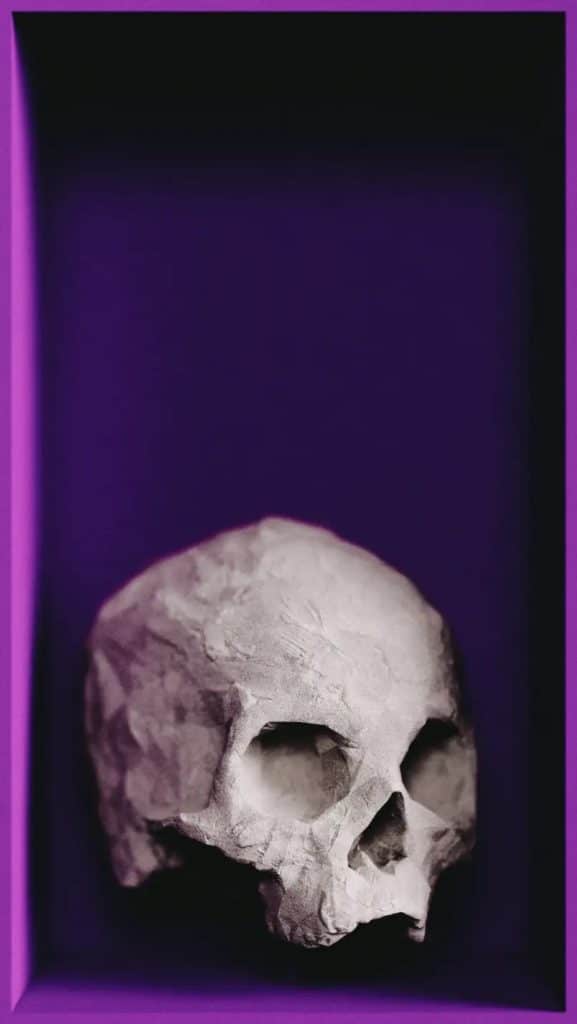
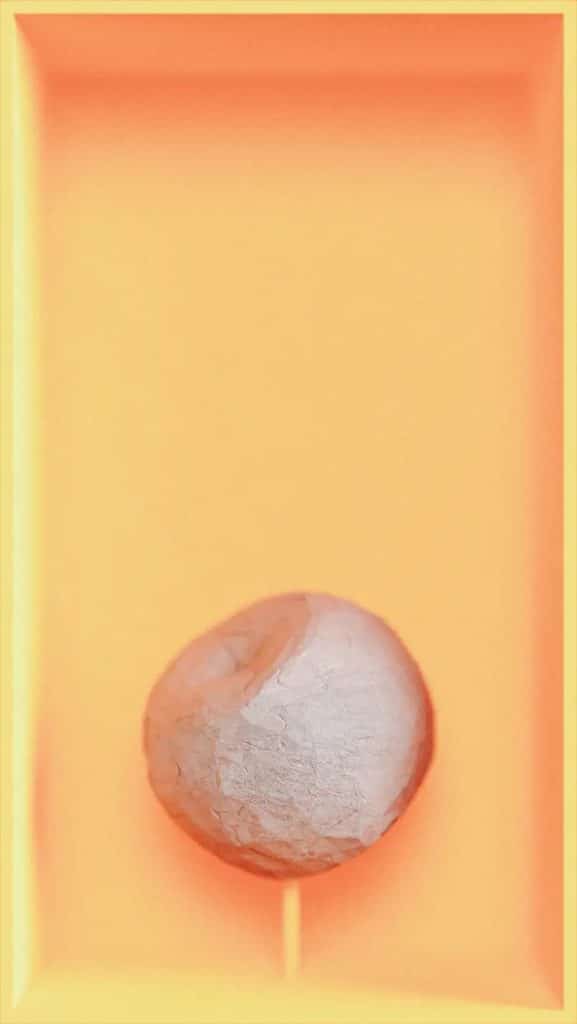
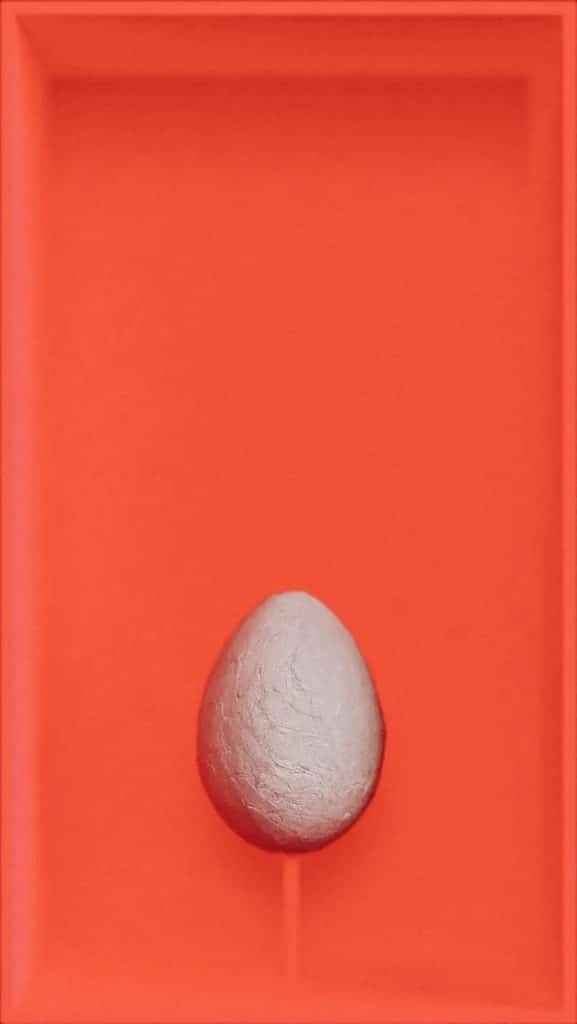
“To give you some context, my work, as well as many of my viewpoints and considerations about the nature of the world, is deeply informed by Hermetics. For this tryptic, I wanted to explore the concepts around the four stages of the alchemical opus: Nigredo, Albedo, Citrinitas and Rubedo.
“To understand alchemy is a bit hard, and explaining it is a tricky task. It came to my attention that asking good questions is more relevant than getting answers sometimes, as the former may lead you to undiscovered paths. Hence, the ‘Liber Quaestionum’ (Book of Questions) bit in the titles of the pieces.
“There’s a cycle being depicted, of birth, life and death — in a weird order, one may think, as the skull is the first element. In Nigredo, the skull symbolizes the dissolution, a sort of cleansing and purification, but also marks what is known in initiatic societies as the neophyte: one who has died in ‘this’ world to be reborn an adept of another one. So, birth.
“The next stage I depict is the Citrinitas — I skipped one, Albedo, although I refer to its color — which represents, on a personal level, the maturing of the individual: the solar awakening or the wise man archetype for Jung. On a wider alchemical scheme, it represents the chemical wedding of the Moon and the Sun, a merging of male and female aspects. I guess the apple could as easily be seen as a biblical reference as a classical Western mythology one. Here, it can well be Adam and Eve reunited, or a golden apple stolen from the Hesperides — it doesn’t really matter, as the tales are very similar in fundamental aspects.
“Lastly, we reach the Rubedo, and that is the final stage, where you achieve the Philosopher’s Stone — here, symbolized by the egg. This is the device that grants eternal youth and turns lead into gold, according to folk tales, but truly is the Condensation — the opposites reunited and reconciled — and all that that implies. Jung would say that redness is Eros (passion) and Pneuma (spirit). Condensation reunion brings about a completion, a full process of becoming, symbolized by the egg — the potential but also the sublimated. An end that is also a beginning, an ouroboros.
“So, where does it all fit the theme of love? Well, in my opinion, to be able to receive the true love, one must prepare himself and polish one’s heart like a precious gem so it can be filled with the Light. Maybe these are not pieces about love but about necessary steps to be prepared for it. From the death of the Ego to the dawn of the true Self.
“It’s not out of nothing that I juxtapose flat colors with textured fake clays, or that I use trompe l’oeil niches. But I’m more interested in knowing how you feel about this when you look at the pieces than in explaining or contextualizing all the bits. They are there for a reason, no doubt.” — Oficinas TK
“Each piece is a point of view on love. The first one, feeling, but never seeing, expresses the fact that love can blind you in your relationship with another person. In this piece, each character knows that the other is there, but the only thing they see is their own reflection in the mirror.
“The second piece, Harmony, represents a balanced relationship between two people growing and evolving together. Each piece is a 3D animation with sound. I did the 3D on Blender, the music/sound design on FL Studio and the postproduction on After Effects.” — Kibo
“This piece is called The Quest and draws inspiration from folklore and mythological tales, and also from my early fascination with Pre-Raphaelite art.
“As with many of my fantasy artworks, this piece started with hundreds of AI-generated landscapes. One or two may inspire a strong idea for a story. I will then use the generated work either as a reference or an underpainting to digitally paint over in Photoshop. The story leads out of the process.
“I wanted a more literal interpretation of the ‘mythic love’ theme for this piece and took my inspiration from the many tales about heroes and heroines fighting against the odds on some mighty quest. They are fighting for something bigger than themselves, something transformational. And what is bigger and more transformational than love?” — Adam Fryda
“For Selkie, I wanted to make an artwork that was connected to a myth from my own Scottish culture. In the north of Scotland, we believe that the selkie is a mythological changeling whose soul has been condemned. They are fallen angels who spend their lives shapeshifting between humans and seals. Stories about selkies involve questions about love, life and death and the natural world. I was also inspired by the art of Edward Fuglø, who created a wonderful series of postage stamps for the Faroe Islands about the legends of the selkie.
“In this ambiguous sculpture, we are unsure whether the selkie is saving the man from drowning, making love to him or dragging him to his death. The selkie’s calm, upright appearance represents stoic perseverance, determined strength and natural beauty. The man’s expression could be either passionate ecstasy or painful hopelessness.
“I wanted to express the fluid nature of love — how it can traverse from safety to danger, darkness to light — reflecting the duality of life. Love can mean being kind but it can also be letting go, or even putting to death. I recently had to euthanize my lovely dog. It raised so many questions about what one must do for love. Sometimes the hardest things, the cruelest, can also be the kindest.
“Sappho was a great lyrical poet and musician who lived on the Island of Lesbos in the early seventh century BCE. Sappho is an icon for many LGBTQ+ people, as she was famous for her relationships with other women.
“In ancient Greece, it was more acceptable to have same-gender relationships than it is today. The island where she spent most of her life spawned the word lesbian. Her own name inspired the word sapphic to describe the love between two women.
“This animated sculpture was inspired by the painting Sappho (1877) by Auguste Charles Mengin. Here, we see Sappho with her poetry book and her lyre. Her poetry is all-encompassing, wrapped around her body, indelibly printed onto her skin. This depicts the moment of contemplation before she leapt to her death from the Leucadian cliff tops.” — Angie Taylor
“The starting point of all achievement is LOVE. Keep this constantly in mind. Weak love brings weak results, just as a small fire makes a small amount of heat.” — Andrés Zighelboim
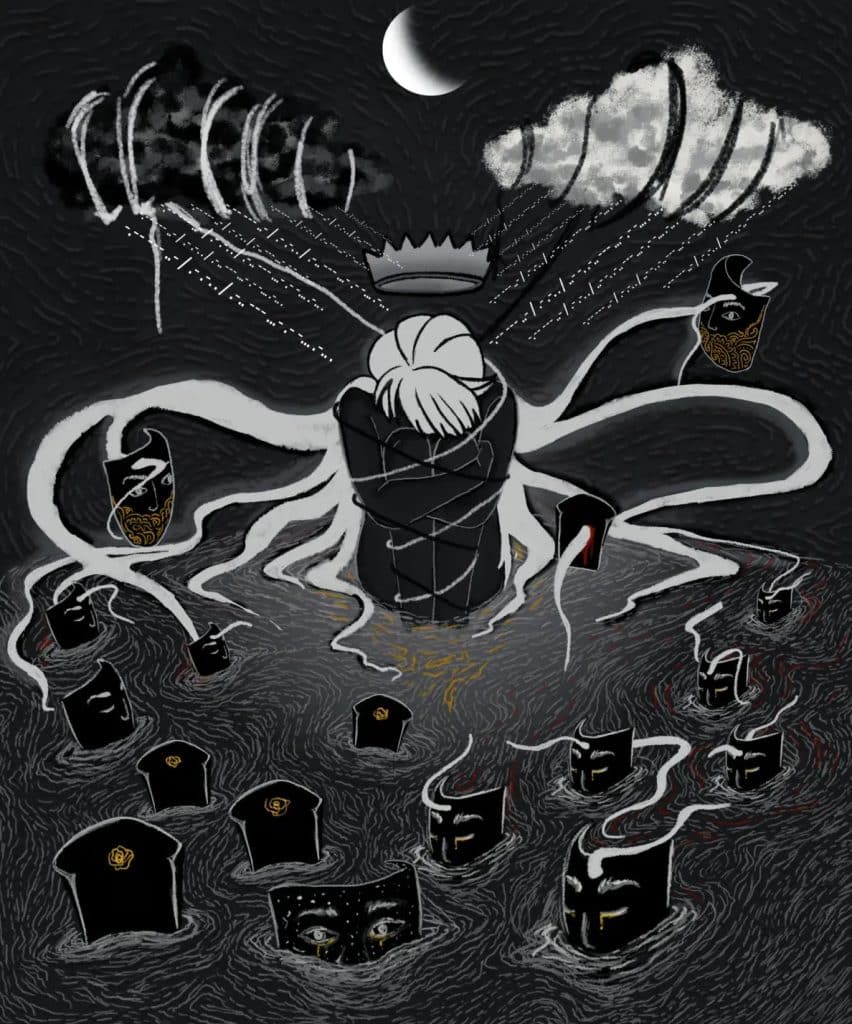
“‘Mythic love’ as a theme was pretty challenging for me. My art language is sharing my experiences, journey and learnings in a symbolic way. And love is one of the feelings I have struggled to recognize and that has been hard to accept, as I have felt unworthy of it for a long time. Ha ha. So, before working on this theme, I had to go down my memories and recall all attempts to find love. The whole process came through introspection and made me more compassionate for myself and for others. The resulting pieces are an attempt to invoke similar feelings from a viewer.
“The two canvases share two different perspectives of one relationship. When viewed separately, you see them hurting each other. When viewed together, you know they are trying to love and be loved. The pieces are mostly black and white, with golden highlights to represent hope and love and red to represent fear. The masks are references to my past work Layers of lies, which talks about how we create layers of masks in an attempt to be more likable, and in that process, we lose the sense of reality of who we are and what we want.
“Both works are divided into three segments: past, present and future. The left side shows the past, our experiences that influence how we feel and perceive events in the present (the center part of canvas) and determine what actions we feel would save us from being hurt or hurting others in the future (the right side of canvas). The scenes take place in water, symbolizing change and chaos in its unpredictable movement. Isn’t that how love is — uncontrollable, unpredictable and capable of changing us completely?
“The first piece is titled I can’t see you, in which a girl hiding her face is trying to search for love in someone, but all she is presented with is masks. Hence, she keeps doubting herself and her worth. She rejects these masks, as they just bring her pain. The clouds are her past experiences, and the thread shows what she tried carrying with her from those clouds. When things were bad, she still tried to focus on the good, but now, because of those experiences, she is too scared to let her guard down. The Morse code emanating from clouds reads ‘lovable’ in the past and ‘unlovable’ in future. This internal fight makes things exhausting for her.
“The second piece is titled Hide. The broken mirror represents a critical self-image. The figure is crying, hurt by the mirror below them, and is trying their best to not be vulnerable or let anyone take advantage of them.
“In the past, they have been rejected so many times that in the future, they attempt to create a person who is more ‘likable.’ All this person wants is love, but their heart is caged. Softness is hidden behind the strong walls trying to protect them. This concept is a reference to my past work Protection, which talked about how certain past events make us change ourselves to protect our kind, sweet and free side from damage. And in that journey, we become the first to kill that side of us.
“It is a blessing to have someone who can understand us, someone who tries to see beyond. We all want someone we feel at home with, we feel safe around to be vulnerable and trust enough to be ourselves with, without any masks.
“These two works are my attempt to make viewers think about these complicated feelings and each other in a more compassionate way. We all are broken, hurt and can doubt our self-worth. Sometimes, when we are being too harsh to ourselves, we want someone to let us know how wrong we are about ourselves.” — 0xMJ
“For this piece, I worked with 3D scans that I made on one of my trips to the south of my country, Argentina. For a month, I camped in native forests where only the vegetation and the animals that live there surround you. This is an experience I try to do every year, as I find it essential for my well-being and mental health.
“I feel a deep love for nature, and I am especially a fan of mountains and forests. When I find myself there, I connect with myself and with nature in a special and unique way.
“In Forest Spirit, I wanted to represent the sensation that permeates me every night that I sleep in my tent, that silence interrupted by the trees that creak and remind you that they are there taking care of you from the rain, a warm calm that allows you to clear your mind and immerse yourself in a deep sleep, the soft breeze that enters through the mosquito net of the tent every morning, announcing that the sun is rising and a new day begins.” — Lulú
“Narcissus is about the reflections of one’s own reality. My work is based on memory and imagination, what we can remember and how this changes and changes us. In the piece, I included things capable of reflecting images: the water, the split mirrors floating with the waterlilies, the hanging jewels. These things show any number of realities in their reflections.
“I believe that we are infinite and capable of loving in this way, too. I believe that self-love can be transmuted into love for others, because after all, love is about giving without expecting anything in return.
“I conceived of Daphne as the opposite of Narcissus. It’s inspired by the story of Daphne in Greek mythology. She relates to love in a tragic way, offering more questions than answers: Can love be one-sided? Can the tragedy of a person become something sacred?
“In her transformation in my piece, Daphne begins to turn into an olive tree whose leaves poke out of a wound, and thorny vines surround her for protection. It’s about protecting oneself. The big red ball is a warning sign: ‘In case of emergency, break the glass.’ Change can be abrupt. It can be something violent that occurs to protect us.” — Alejandra Her
“The Forgotten Love portrays Guinevere and King Arthur. I had in mind all these women who guide humanity with their light but remain in the shadows of history. My train of thought started indeed with Guinevere, King Arthur’s wife, and I was baffled to discover how little has been written about her.
“My hometown is not far from Brocéliande, a mystical forest in the Arthurian legend. It feels special there — I feel the vibes from the land and the ancestral magic. I thought about a legend in which Arthur would come back home and realize that what he was looking for all along lay in Guenievre, in her unconditional love and support.
“And you can reflect back on all these legendary women who have been the strength of humanity, keeping it all together while their men got all the credit, like Mary Magdalene to Jesus (I know it’s controversial), Winnie Mandela to Nelson Mandela, Mileva Marić to Albert Einstein, et cetera.
“By staying in the shadows for the sake of love, these women created a precedent by showing the ideal of femininity as being caring, hiding and giving their all to masculinity. So, underneath all the cuteness and peace in this artwork, there is a message about bringing to light those women who have been forgotten by history.
“As for the medium, I started with my usual watercolor, and I blended it with natural elements I brought back from a romantic walk in the Great Malvern, like flowers and leaves. I left them on the wet paper while the watercolor was drying, creating a structure in the splashes of color. Then, guided by the random stains and the remaining white of the paper, I drew the silhouettes of Guinevere and King Arthur in ink. Afterward, I extended the power of watercolor with digital tools, bringing it to life.
“There is a sense of universal, unconditional love here — almost in a religious way. As an artist, and as myself, I feel love for everyone by default. This is something deeply anchored within me. Hence, my art always comes from a happy place. I want people to enjoy my art as if they were children, as I create like a child, too, prioritizing the fun and joy of creating.” — Lapin Mignon
“The artwork I am presenting for ‘Mythic Love’ is titled Mythic Angel, and it is a digital collage. The technique I used was inspired by stained-glass art, and the aim was to create a colorful and bright result, as if there is a source of light behind the artwork. It is the same technique I worked with when I started my journey as a hand-cut-collage artist 20 years ago, and now, for the first time, I am using only digital tools to re-create the same process and result.
“My piece is inspired by the Pre-Raphaelite movement, which is, in my opinion, the most romantic art movement. Love is celebrated as a story built in the world of imagination, cutting all ties with reality and giving mythical propositions to the object of our desire.
“I am very much intrigued by the idea of platonic love in the metaverse, which is a world of pure imagination. Will this experience enhance our feelings or make us more numb to the mystery and excitement by constantly exposing us to the surreal? I think it is a topic worth exploring.” — George Boya
“With So Far // So Close, I focused on an indecisive state of love that can be equally frustrating and exciting. The subjective vantage point evokes a mind-space setting, so it’s not about reality but your perception of your own feelings.
“More than any piece before, I will leave this one open to interpretation. Is it the moment before your leap of faith, when you’re about to know if love is mutual? Is it about grieving, and you cannot help but yearn for your lost one’s presence? Is it about a long-distance relationship, where fantasy gradually overrides a real relationship?” — Jæn
“I chose to interpret ‘Mythic Love’ in a literal sense. So, I decided to paint one of the most famous myths of my area, northern Argentina. El Pomberito is a controversial mythological character. He punishes people who hurt nature. So, I thought, that is a form of love. The love for nature. A mythical love.” — Panter Xhita
“The piece I’m presenting for this exhibition, In the Temple of Athena, is meant to capture one of the darker aspects of love. It’s about the corrosive forces that can turn the bliss of true love into a curse, using the metaphor of Medusa and Poseidon. Let’s recall that Athena wanted to punish Poseidon but settled for poor Medusa because she wasn’t able to exact revenge on Poseidon himself. My adaptation imbues Medusa with more agency than the classical myth, so that I can bring more focus to the curselike nature of love, even if it’s voluntary.
“I’m trying to capture the mythological elements in the theme by going to one of the darker stories in Greek mythology. In my work, I frequently like to explore the elements of strong human emotion through surrealism. Much of my portfolio is concerned with dreamlike perspectives on love as a force of both salvation and destruction.” — ceren yüzgül
“In my life, I have experienced both the incredible joy of loving someone and the harshness of the rejection of that love. I have, over time, expressed these experiences through my art in many different ways. There is a depth, a longing within each of us to be loved and to be able to share love with others. In spite of this, we often find ourselves grappling with broken relationships, failures on our part and others’ to love selflessly and wholeheartedly.
“It is this reality, the complexity and difficulty of love, that I sought to express in my piece and often in my larger body of work. I use glitch and a bit of chaos in my work, as I find they encapsulate life’s struggles and realities so well. I use them to express the truth and hope that through all the chaos and mishaps and brokenness, we can experience beautiful things.
“Specifically, elusive transcendental fondness expresses the struggle, the desire for love. There are two hearts in the piece, a light and a dark heart. The dark heart sets as the backdrop the despair perhaps of a past one seeks to rid oneself of. The light heart speaks of hope, of a desire to change. The love of the past, the hope for a better love in the future. Or is it all just an elusive transcendental fondness?
“There are hand-drawn elements as well as AI-created elements, and then personally created glitches and chaos created through multiple layers and processings/renderings to end with the piece you see now.” — Mighty Moose
“Wailing is a hand-drawn digital painting inspired by cyhyraeth and banshee myths. The frightening presence of these spirits often overshadows their empathetic motives. She is a harbinger, not a killer, appearing by the loved ones of the dying. She wails because she knows the pain of love and loss.” — Stina Jones
“The idea for our ‘Mythic Love’ pieces was to create two distinct entities and then try to conjoin them as much as possible so as to create a sense of wholeness. We tried to make them look frozen in a moment of becoming, as they conceive ideas, concepts and understandings of the world.
“We wanted to create forms that resemble organs as well as organisms in a moment of extreme fertility, combining egg-like shapes with elongated muscular protrusions. The idea was to retell genesis stories through abstracted organic shapes rather than the humanoid supernatural figures used usually in mythology.
“We tried to tackle love in the most carnal sense, moving away from romanticism in favor of a more graphic and physical depiction. Mythology can have a lot of apathy toward human feelings and vulnerability, being rather authoritative and cold.
“Creation myths take place in a primordial age where love as conceived by humans may be totally different or even absent. So, love, as depicted in our pieces, is more about the power to create and animate.” — The Internet Office
“For my works in ‘Mythic Love,’ I drew inspiration from AI-generated images based on my own precious drawings. Both of these pieces are about diving into the unknown while trusting in a higher force of love — like flying into the cosmos knowing that the cosmos will hug you back. Both images give the idea of being a part of a bigger story.
“Love, for me, is not just about the romantic aspect. There is love in every corner, in the simplest acts of kindness. In the end, love will save the world.” — Barbara Pampin
